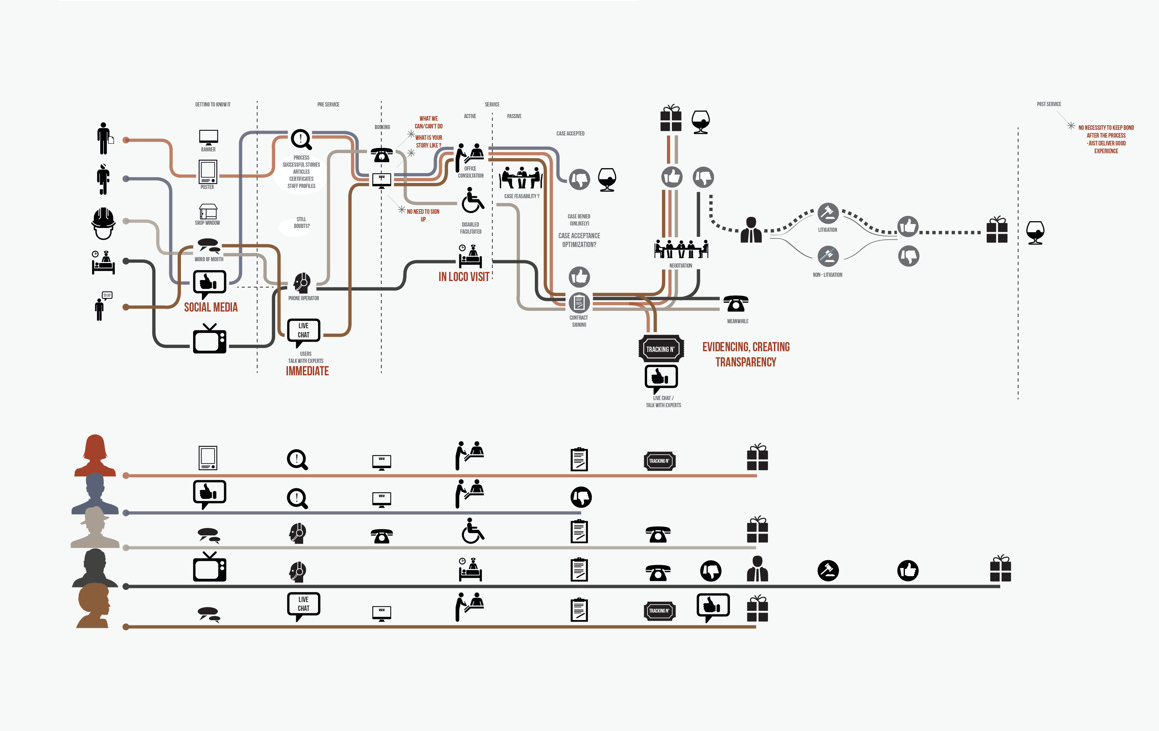I have had a journey with journey mapping. Through it, I have noticed different types of customer journey maps requiring different inputs and resulting in different outputs/impact over time. I think that there is a time and place for each type of journey map and that it is worth categorizing the kind you’re using or creating in light of what you intend to achieve. I also believe that customer journey maps (and personas and scenarios) if kept as “living assets”, can help give all your teams “line of sight” to your customers, and that they are a powerful catalyst for organizations looking to reinvent themselves as truly customer-centered and empathetic.
These are the four high-level types of journey maps that I’ve observed:
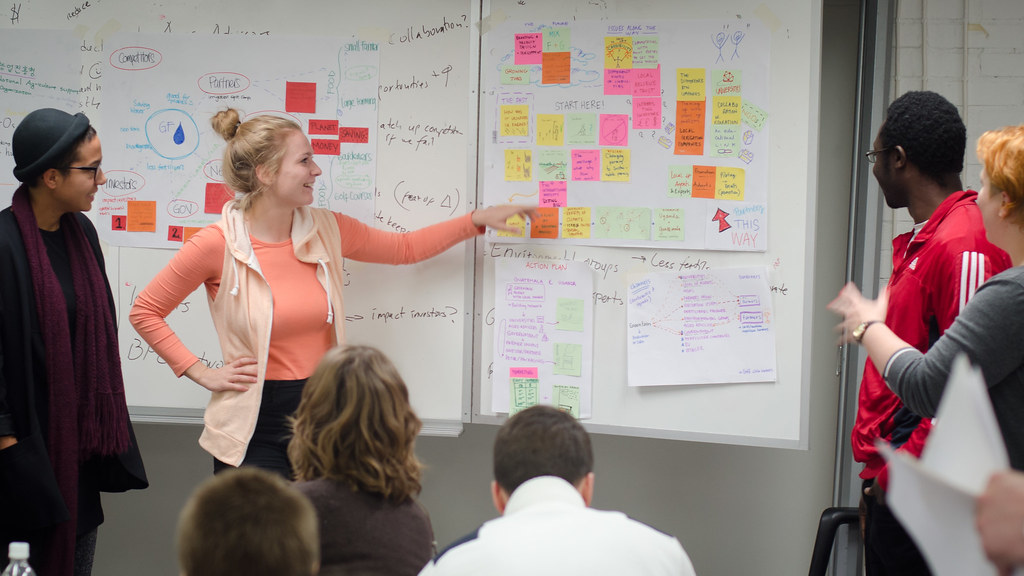
- Product-/Function-Centered Journeys
- End-to-End Customer Lifecycle Journeys
- Customer Behavior-Measured Journeys
- Customer-Centered and Data-Informed Journeys
These aren’t four distinct types of journey maps, for example:
- Type #2 contains (something like) type #1
- Both type #3 and type #4 could apply to type #1 and type #2
- Type #3 and type #4 can (and probably ought to) coexist and be continuously enhanced and improved
All of that is to say: while you may often start with type #1 or type #2, you don’t have to proceed through them sequentially and that there is not a linear “maturity model” across them.
Further, before jumping in to look at these four high-level types of journey maps, let me inform you that I’m a “professional amateur” in pretty much everything I’m sharing in this post. Basically, while I’ve been applying customer journey mapping (and service blueprinting and product and experience management) with teams for years, I’m not formally trained in these techniques and am not an active member of any communities advancing the “state of the art” in these areas. So, if you’re an expert and engaged in the communities of practice, please treat this as a start of a conversation with someone who is very appreciative of the value of these practices, is constantly learning, is applying these tools in the real world and to produce real results, and would love to hear from you.
Alright, let’s get going!
1: Product-/Function-Centered Journeys
Given that most organizations are divided into product teams and functional areas, it is common for teams to create journeys that center on what they control. This gives rise to what I’ve styled the Product-/Function-Centered Journey. While these are certainly the most limited of the group, creating them can be done by (almost?) any team and they are a great sense-making exercise.
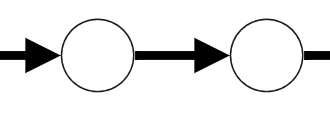
Some points of note about these type #1 journeys:
- Strive to use a customer lens as much as possible
- Leverage the tacit and institutional knowledge about your customers within your group.
- Accept the limitations of your customer understanding
- While the overall outcome may be primarily an inside-out view, and may tend to highlight what WE NEED customers to do so that our business model or function will work, you are still highlighting important insights.
- Make note of the assumptions you’re making about your customers and their situation
- Include in this the processes and actions they may be doing between the steps of the journey you’re defining. If you have a B2B offering, there may be significant internal processes and collaboration that your customers need to manage as well.
- Make note of the connections and things you don’t know about other parts of your own organization
- Only in the smallest of organizations is the whole customer experience owned by a single team. With the Product-/Function-Centered journey map you’ll be hand-waving over, and making assumptions about, experiences that you don’t control.
2: End-to-End Customer Lifecycle Journeys
Product/Function-Centered journeys are the building blocks of an End-to-End Customer Lifecycle journey, or can be. As we attempt to look across the entire customer lifecycle, from when they are first discovering an offering to them becoming a reliable customer, we need to involve representatives of all the teams that deliver the end-to-end experience. The Product/Function-Centered journeys these teams may already have, and especially the connections to the other parts of the organization they identified through that process, can inform the End-to-End Customer Lifecycle journey.

An important note, or additional consideration, is that your end-to-end journey should not simply be the concatenation of all the journey steps from the shorter journeys. You need to bring things up a level (or two) so that you identify the phases your customers will experience and mindsets they’ll adopt at different times in their overall lifecycle. There are some good models for customer acquisition that you can reference for inspiration for those phases, but don’t forget the post-purchase experiences that may be unique to your business.
The effort to undertake an End-to-End Customer Lifecycle journey is significantly greater, and the solution significantly more complex, than a Product/Function-Centered journey. The increased number of stakeholders, contributors, points of view, backgrounds, and motivations/incentives drives increases in effort and complexity all on its own. But there is another layer that gets added as you look at the end-to-end too: “leaps and cycles”.
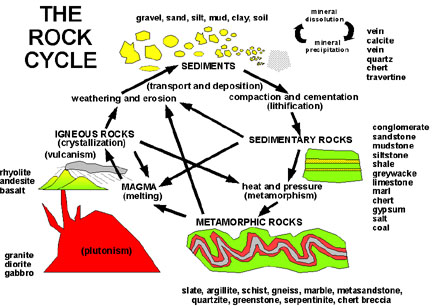
You should expect to uncover and define “leaps and cycles” in your end-to-end journey. Leaps are when certain customers, or in certain scenarios, the experience skips a phase and moves forward in the journey. Cycles are when customers go backward in the journey flow to a previous phase. Understanding when and how to facilitate leaps and cycles is key to a seamless and connected end-to-end experience. Also, when you journey with your customers through the leaps and cycles happen that in the real customer experience, you expand and improve your understanding of your their needs and goals and better support their value creation processes.
3: Customer Behavior-Measured Journeys
Journey mapping can be used as a point-in-time sense making activity, and is valuable in that usage. Journey maps, i.e. the outputs of the activity, can be used to structure, order, and make sense of telemetric data about how your customers are experiencing their relationship with you and your offerings. There are great tools for doing this in digital experiences, especially focused on driving conversions. But huge insights are available after purchase that help you tap into the “unlimited resource of customer dissatisfaction” to improve your offerings and innovate new ones.

In many organizations, the type of data that is used to “animate” the type #1 or type #2 journeys is what they use to be “data-driven”. As you see in the name for type #4, I prefer “data-informed” over “data-driven”, and the reason I do is related to why I’ve not used “data-driven” here: data is hugely valuable and necessary, but it is not sufficient for good decision making or for good insight into customer needs and goals. For good decision making, you need good judgement, which you get from experience, which you get from learning from previous bad decisions made with faulty judgement. For good insight into customer needs and goals, you need empathy, which data can’t provide: you need to talk to your current, and desired, customers and “get out of the building” to see and experience what they’re trying to achieve with your offering.
Be that as may be, data is still necessary for good decision making and insight into customer needs and goals, and you make the value of the data even greater when you can position and visualize it the context of a customer journey. This is true for a Product-/Function-Centered journey (type #1), but even more so for an End-to-End Customer Lifecycle journey (type #2), where data from one phase is also relevant, or even more relevant, in other phases. The “leaps and cycles” you uncovered while creating a type #2 journey should certainly be conduits of data between phases, as well as sources of data themselves. Additionally, when you identify some correlations between data across the whole end-to-end experience, you may also have identified an experience that needs attention, maybe even one that needs to be intentionally designed for the first time.
4: Customer-Centered and Data-Informed Journeys
Finally we come to our fourth type of customer journey map, the Customer-Centered and Data-Informed journey map. It is defined by two concepts that can occur independently, but I think need to for long-run sustainability, happen together. By Customer-Centered, I mean that the journey reflects what the customer’s motivations are, understands their situation, and defines what we need to do for customers to be successful (rather than what we need customers to do for us to be successful). By Data-Informed, I mean that the journey encodes what we understand about our customers from both measuring their behavior (as described in the type #3 journey) and speaking to them, “getting out of the building” to visit them and build empathy and understanding of their circumstances, and co-creating and incrementally implementing better solutions with them. With these definitions in mind, I think it is easy to see how “Customer-Centered” depends on “Data-Informed”, but the inverse may need a bit of explanation.

I believe the major distinguishing feature between “traditional companies” and “transformed companies” is who is at the center of their universe. This is what Steve Denning describes as the Copernican Revolution In Management, and I think can be articulated for journey mapping by considering which of these two questions is the primary one you’re trying to answer:
- What do we need to get our customers to do so that we’re successful?
- What do we need to do so that our customers are successful?
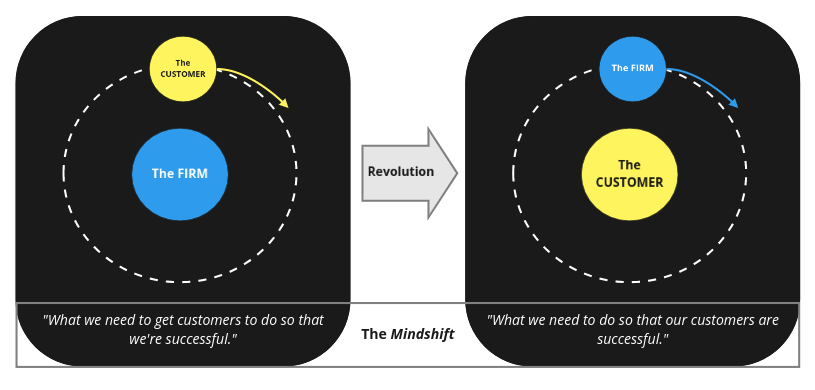
You can create and use all the other types of journey maps, and benefit from them, and still be firm-centric in your mindset. And I’ll grant that you can be Data-Informed, to a degree, without being Customer-Centered. That degree being measured by all the data you’ll fail to weigh properly, or seek out in the first place, such that your journey is really only partially informed by the relevant data. Further, without being Customer-Centered, the value of the living journey map to your organization is much reduced as it will not serve to aggregate and disseminate the line of sight to customer needs and goals that some members of the company have to better inform the work of teams who don’t have that direct view. This “clear line of sight” to the customer for all employees and teams is one of the characteristics of “post-Copernican” firms observed by Steve Denning:
[E]veryone in the organization has a clear line of sight to the ultimate customer or end-user, which enables everyone to see how their work is adding value to customers—or not. If not, they can ask: Why are we doing this work at all?
The Age of Agile by Stephen Denning
Ultimately, without being Customer-Centered, the reasons and value for maintaining a type #4 journey map that is Data-Informed goes to zero. In which case, you “max out” with a type #3 (Customer-Behavior Measured) journey map that some leaders will complement with non-measurable data that that they get from talking to customers. And you will have improved your offerings, your customer experience, and your business; so you will be better off than you otherwise would have been. But you will also remain reactive to your customers, and to changes in the market competition. Whereas by adopting a Customer-Centered perspective, you can become a proactive partner in your customers’ journey and lifecycle, as well as a proactive “market-maker” through the introduction improvements and innovations uncovered through a co-creative empathy-driven process with your customers, centered on their evolving needs and goals. So while there is value in journey mapping and being data-informed, there is more value in also being customer-centered.
Personas and Scenarios
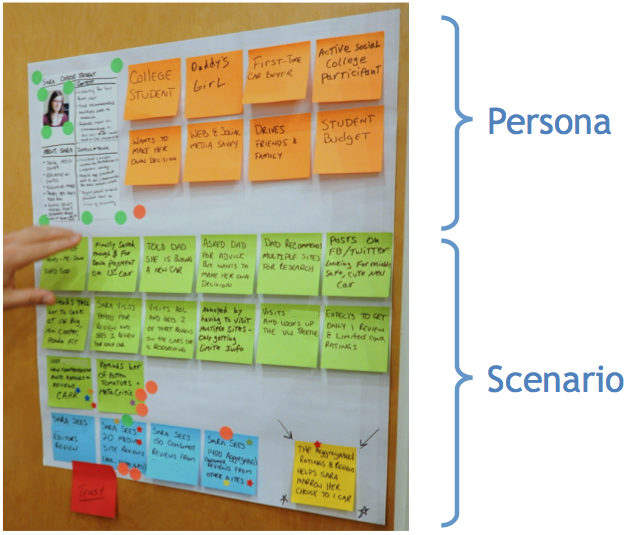
Before we wrap up, I think it is important to acknowledge the importance and value of a couple of related tools: personas and scenarios. Creating, and maintaining living, Customer-Centered and Data-Informed customer journey maps, assumes that you can define your customers as personas and that you have a relevant scenario that you can imagine them taking. At the same time, customer journeys are very powerful tools in refining and uncovering personas and scenarios. What this means is that a hastily constructed (set of) persona(s) and an overly simple scenario should not stop you from doing your first journey map (usually a simple type #1, Product/Function-Centered, one). It also means that you should expect that your personas and scenarios change over time.
Given this, if you choose to invest in Customer-Measured (type #3) or Customer-Centered and Data-Informed (type #4) journeys, you should also invest in keeping your personas and scenarios up-to-date. This means that as you increase knowledge of your customers and adjust the scenarios your business addresses, you take time to revisit your personas and scenarios. The investments needed to turn these into “living assets”, need to be weighed against their ability to provide better organizational “line of sight” to your customers’ needs and goals. The outcomes of higher customer empathy and better informed decisions is how you justify keeping your journeys, personas, and scenarios alive. It is also how you hold any teams you develop to support this function lean and efficient; through that lens you can avoid over-investing in what ought to be a useful tool for your teams, but is not part of your offerings.
A Journey to the Center of the Customer

To wrap up this article I will reiterate a few key points from it as takeaways:
- All of these types of customer journey maps are valuable: pick the right one for the needs and demands of your situation
- Don’t worry about having all the right people, personas, detailed scenarios, or other things you think you need: just begin – there’s huge sense-making value in the cooperative approach of creating your first one
- Look for “leaps and cycles”: your customers’ journey with you is not linear
- Make your customer journeys, personas, and scenarios “living assets”: they will help you make sense of the data pouring in about how your customers are interacting with you, and help you to extract insights from within it
- Leverage them as simple and effective tools to aggregate and disseminate “line of sight” to customers: even your teams that don’t speak to customers can develop better customer understanding and make better informed decisions through “living” journeys, personas, and scenarios
- Use the development, maintenance, and evolution of customer journeys, personas, and scenarios as a catalyst for your company’s transformation: shift your mindsets from “what we need our customers to do”, to “what we need to do for our customers”
I believe you can start small with journey mapping and that it can have huge impact on how you understand your customers, your business, and your opportunities.
Alright, let’s get going!
